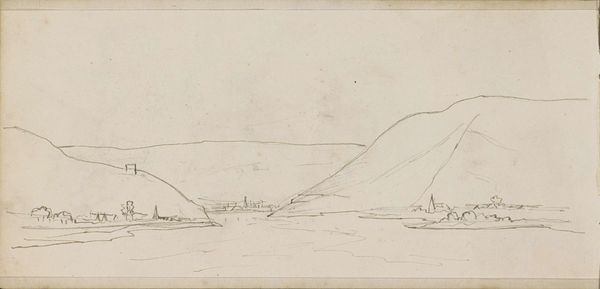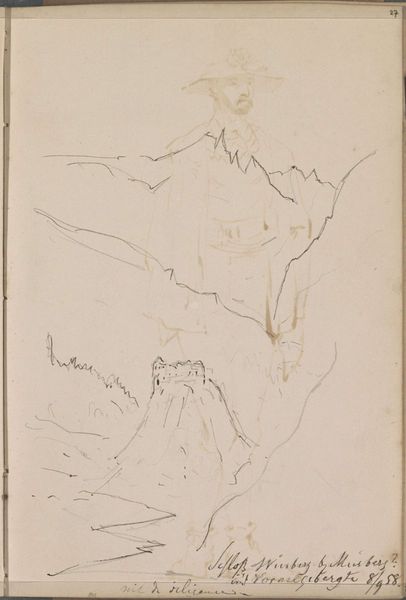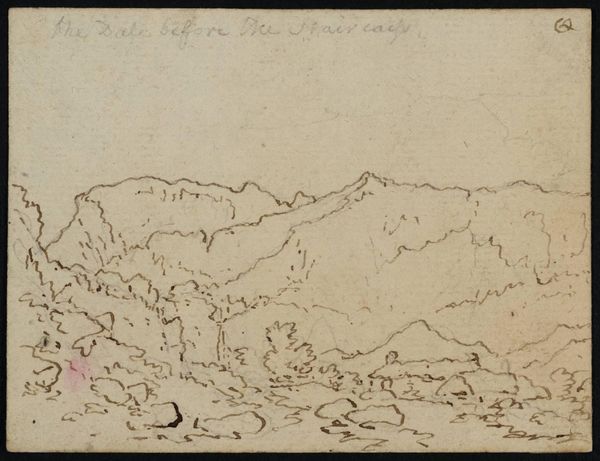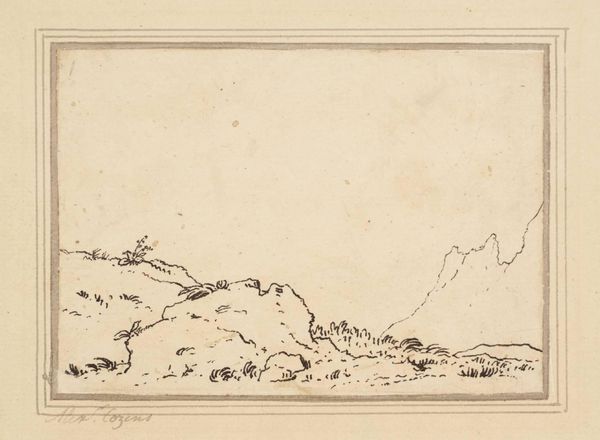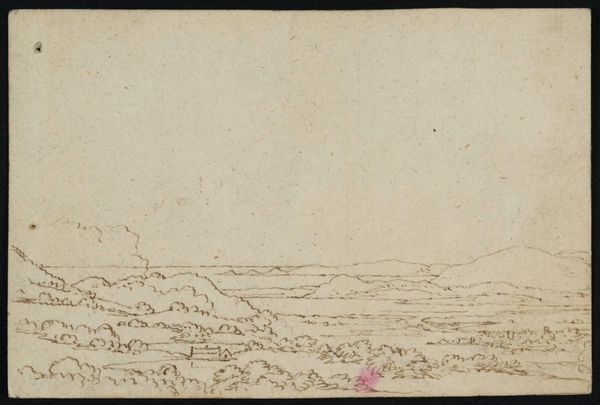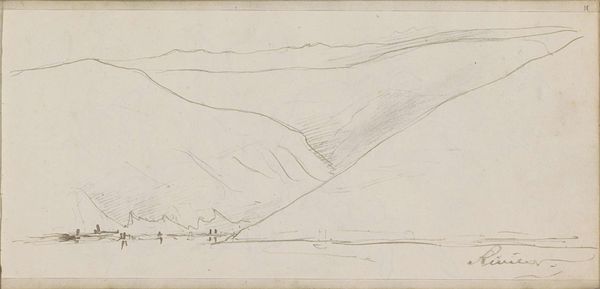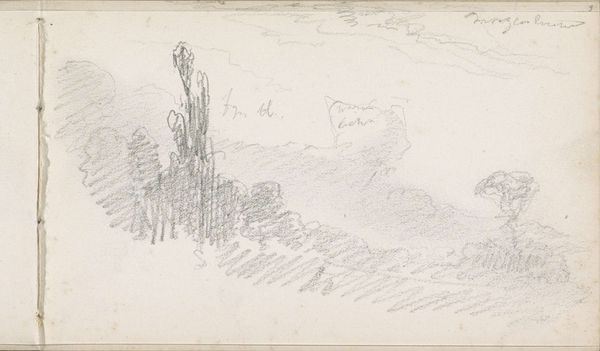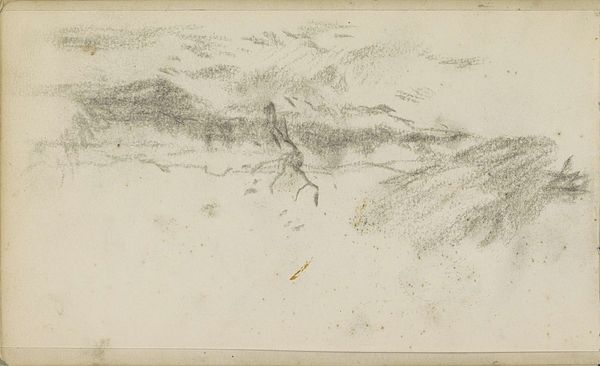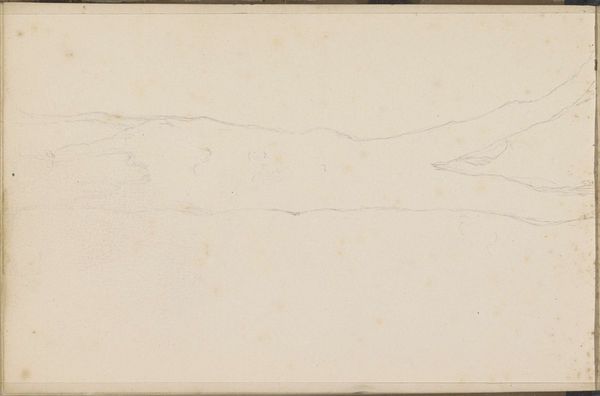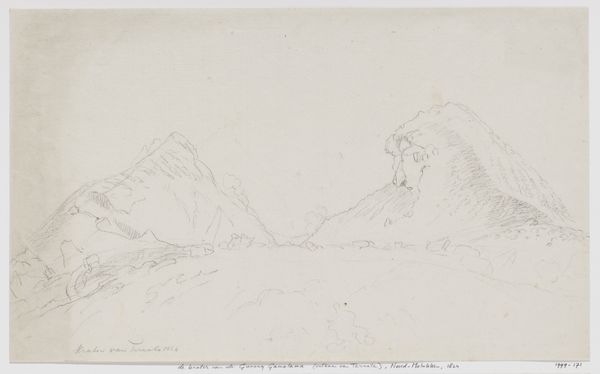
drawing, pencil, graphite
#
drawing
#
amateur sketch
#
toned paper
#
light pencil work
#
pencil sketch
#
sketched
#
incomplete sketchy
#
landscape
#
personal sketchbook
#
rock
#
idea generation sketch
#
romanticism
#
mountain
#
pencil
#
graphite
#
sketchbook drawing
#
initial sketch
Copyright: Rijks Museum: Open Domain
Curator: This is "Castle on a Rock Among the Mountains" a pencil and graphite drawing by Johannes Tavenraat from around 1840. You can find it on display at the Rijksmuseum. What's your first impression? Editor: It feels incredibly fragile, almost like a whisper of a memory. The castle itself is barely there, clinging to the rock like a forgotten dream. Curator: Exactly! Tavenraat really captured that romantic notion of the ruin, the vestige of something grand decaying against the timeless backdrop of nature. He's focused here on atmosphere and feeling, isn't he? Rather than detail, the emphasis on the light pencil work helps evoke that fleeting feeling of an experience, like it might vanish any second. Editor: That vulnerability speaks volumes. Castles, of course, symbolize power, control. But here, it's so delicate, almost overwhelmed by the mountains. Is this a symbolic statement about the temporary nature of earthly power? It makes you wonder about how our own symbols will be viewed and interpreted centuries from now, if our own architectures and infrastructures will amount to no more than suggestive pencil lines, subject to decay just like the mountains on either side of this castle, slowly returning to the earth. Curator: A powerful question. Tavenraat isn't rendering the specifics of the castle, but focusing on its conceptual essence—what a castle *means*, as well as how we engage with romanticism as an artistic mode. Think about it, we're not seeing strength or authority, but maybe the longings for an idealized past, as filtered through time and the imperfection of human memory. Editor: So the very fragility is the point. I almost missed how little commitment the artist puts into drawing it at first! It's that lack of definite form which evokes longing—because as soon as we give things solidity they can become ugly. This sketch offers something far more emotionally potent: a feeling. It’s as if Tavenraat has sketched not just a castle, but a whole melancholic sentiment. Curator: And on toned paper, no less, which enhances that sense of gentle fading. Thank you for pulling back the layers on the psychological meaning of this piece! Editor: A genuine pleasure to examine alongside you, reflecting together on this small image. It really invites us to ponder how ruins—and our images of them—operate within our cultural memory.
Comments
No comments
Be the first to comment and join the conversation on the ultimate creative platform.
